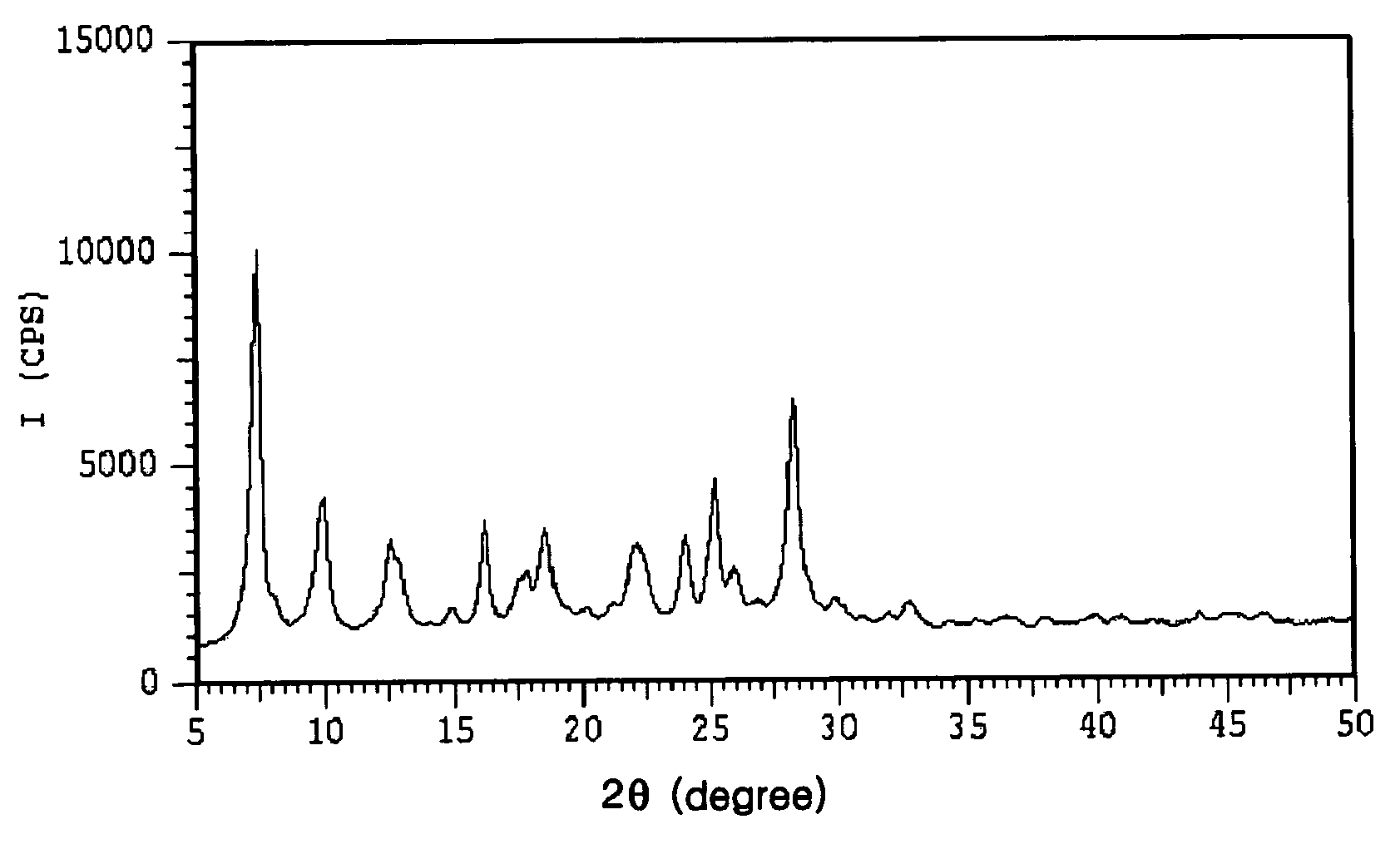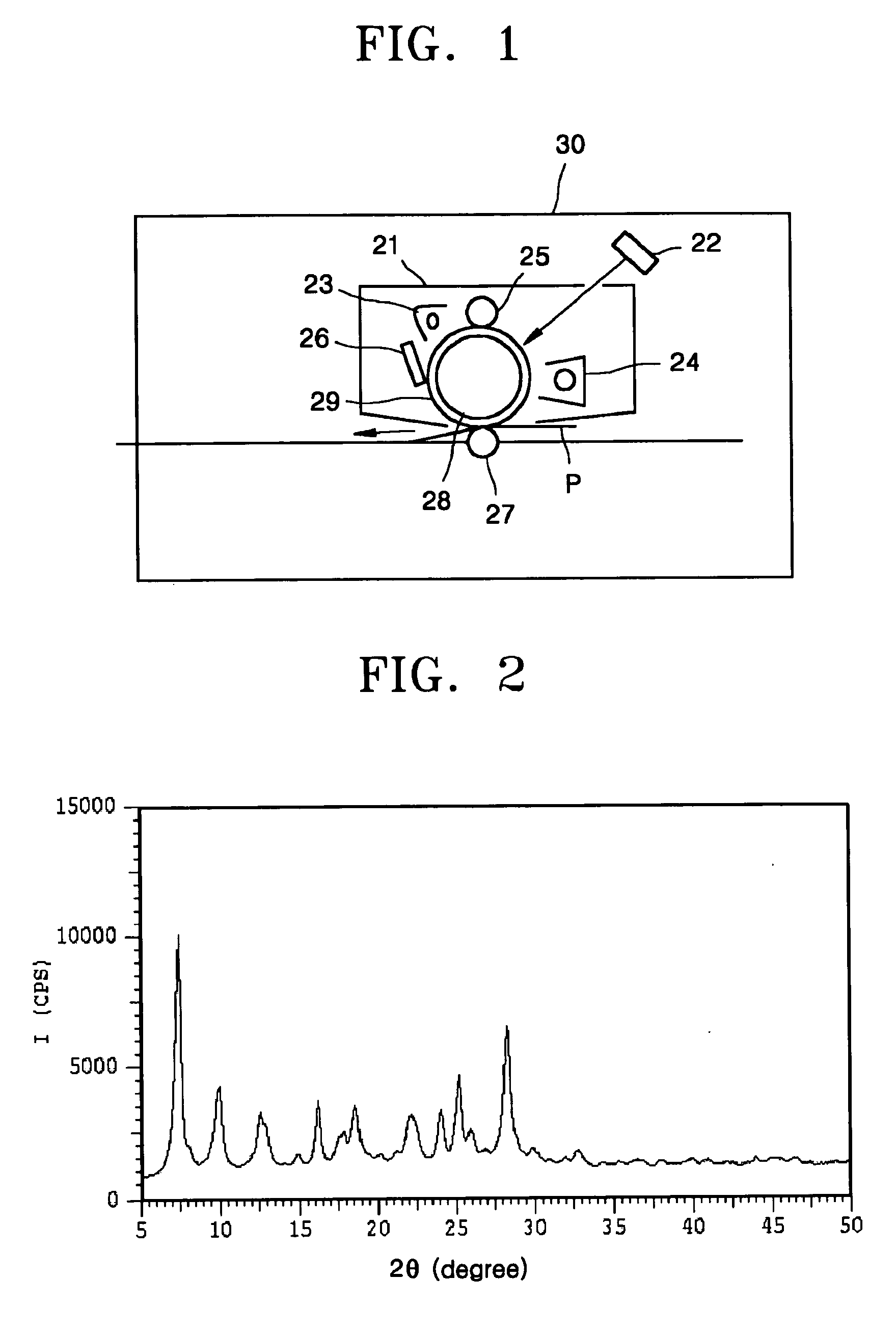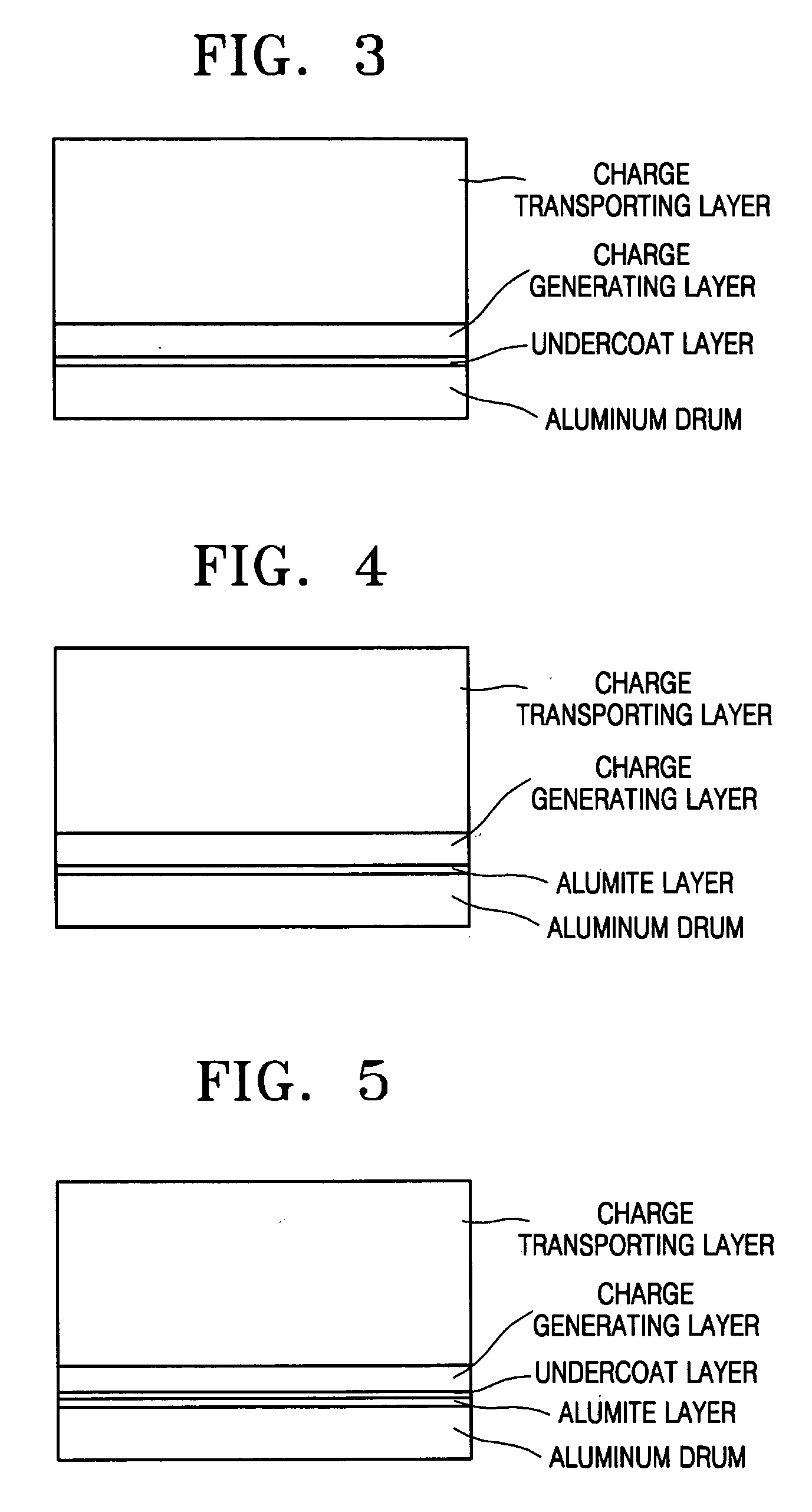Electrophotographic photoreceptor and electrophotographic imaging apparatus
- Summary
- Abstract
- Description
- Claims
- Application Information
AI Technical Summary
Benefits of technology
Problems solved by technology
Method used
Image
Examples
example 1
[0089] 7 parts by weight of μ-oxo-gallium phthalocyanine dimer (GPL-G, available from Orient Chemical Industries, Japan), 3.5 parts by weight of polyvinylbutyral resin (ESREC BH-3, available from Sekisui Co., Ltd.), and 100 parts by weight of 1,2-dimethoxyethane were ball milled for 48 hours together with 300 parts by weight of glass beads. The resultant dispersion was diluted with 400 parts by weight of 1,2-dimethoxyethane and treated with ultrasonic waves for 30 minutes to prepare a stable coating solution for forming a charge generating layer. The coating solution was uniformly coated on an aluminum drum having an alumite layer using a dip coating method, and then dried at 150° C. for 1 hour to form a charge generating layer.
[0090] 4 parts by weight of 4-dibenzylamino-2-methylbenzaldehyde diphenylhydrazone (CTC-191, available from Takasago International Corporation, compound (4)), 4 parts by weight of 1,1-bis-(p-diethylaminophenyl)-4,4-diphenyl-1,3-butadiene (T405, available fro...
example 2
[0091] An electrophotographic photoreceptor was manufactured in the same manner as in Example 1, except that bis(p-4,4-diphenyl-1,3-butadienephenyl)phenylamine (compound (2)) was used in the charge transporting layer, instead of 1,1-bis-(p-diethylaminophenyl)-4,4-diphenyl-1,3-butadiene (compound (1)). The electrostatic property and the durability of the electrophotographic photoreceptor were estimated and the results are shown in Table 1.
example 3
[0092] An electrophotographic photoreceptor was manufactured in the same manner as in Example 1, except that bis(p-4,4-di-p-methylphenyl-1,3-butadienephenyl)phenyl-p-methoxyphenylamine (compound (3)) was used in the charge transporting layer, instead of 1,1-bis-(p-diethylaminophenyl)-4,4-diphenyl-1,3-butadiene (compound (1)). The electrostatic property and the durability of the electrophotographic photoreceptor were estimated and the results are shown in Table 1.
PUM
| Property | Measurement | Unit |
|---|---|---|
| Percent by mass | aaaaa | aaaaa |
| Percent by mass | aaaaa | aaaaa |
| Percent by mass | aaaaa | aaaaa |
Abstract
Description
Claims
Application Information
 Login to View More
Login to View More - R&D
- Intellectual Property
- Life Sciences
- Materials
- Tech Scout
- Unparalleled Data Quality
- Higher Quality Content
- 60% Fewer Hallucinations
Browse by: Latest US Patents, China's latest patents, Technical Efficacy Thesaurus, Application Domain, Technology Topic, Popular Technical Reports.
© 2025 PatSnap. All rights reserved.Legal|Privacy policy|Modern Slavery Act Transparency Statement|Sitemap|About US| Contact US: help@patsnap.com



